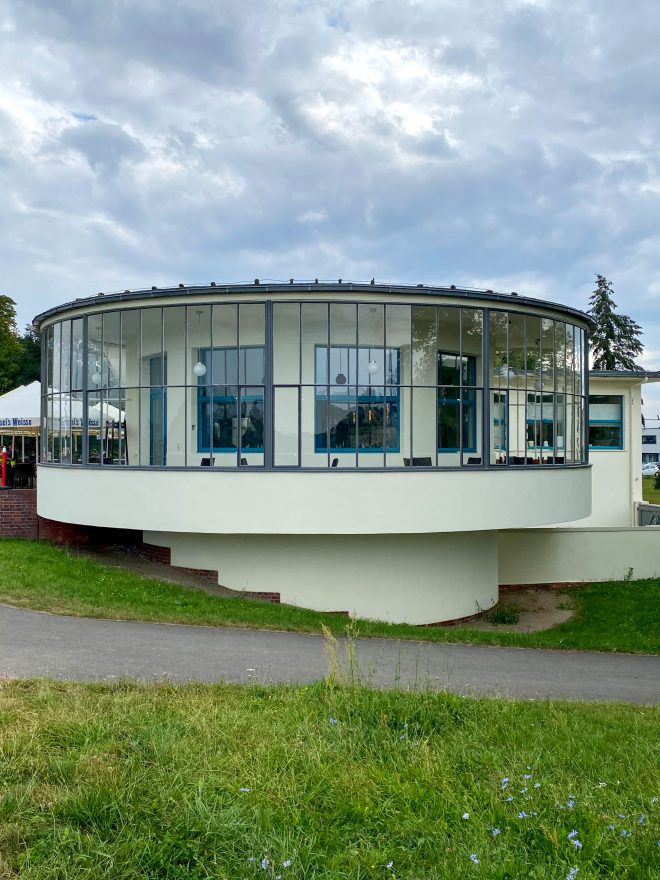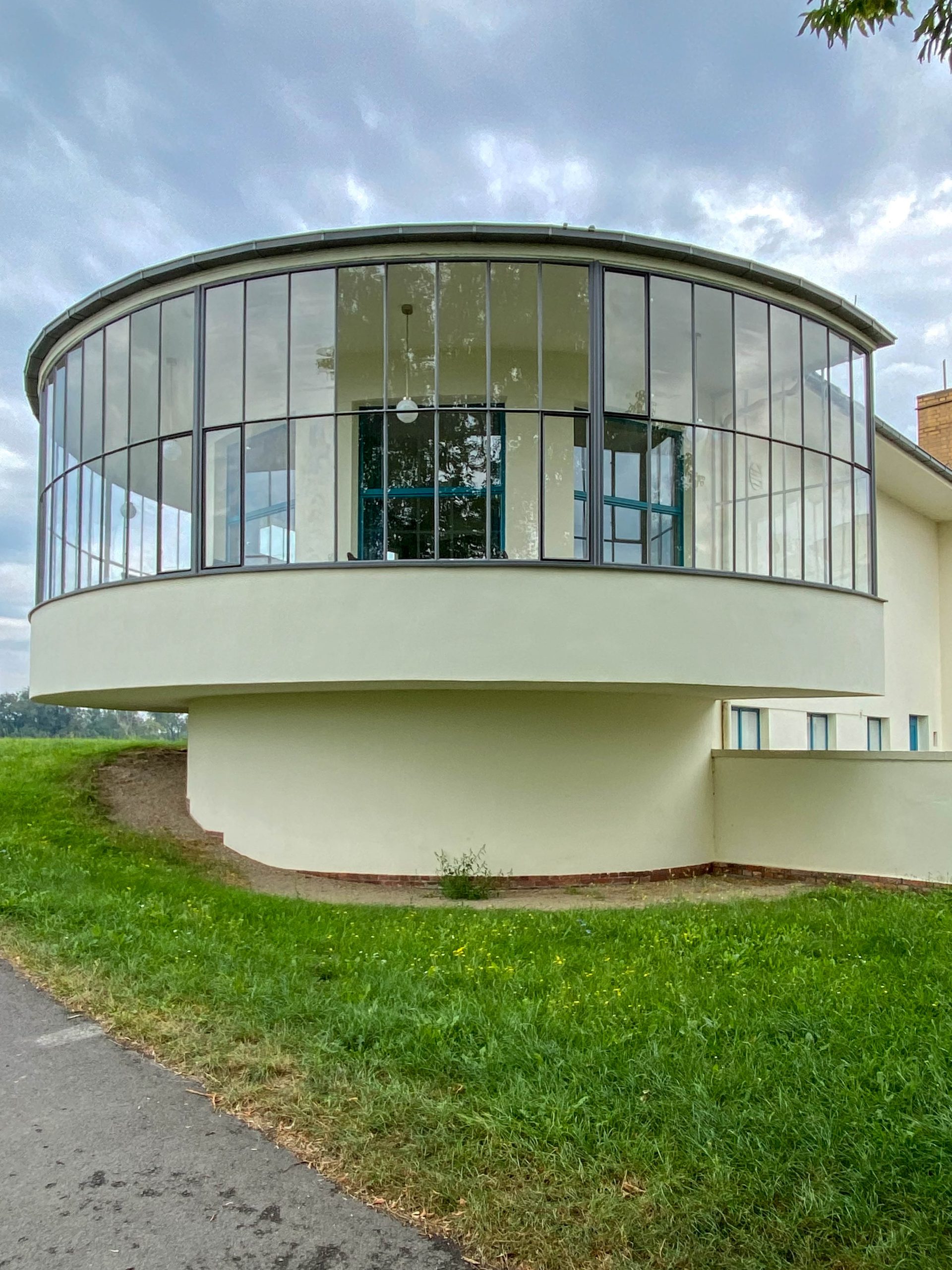
Kornhaus, 1929-1930. Architect: Carl Fieger. Photo: Daniela Christmann
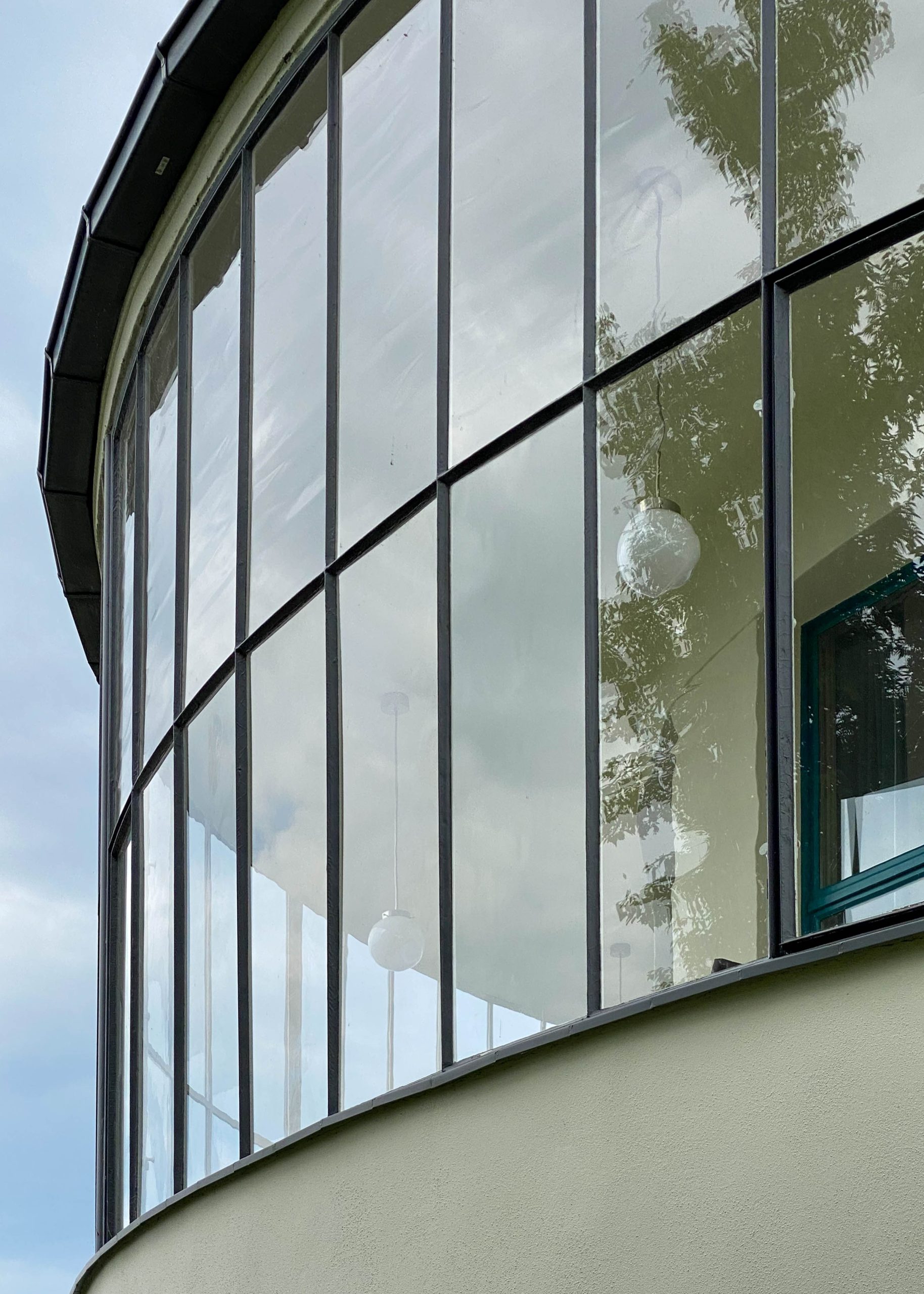
Kornhaus, 1929-1930. Architect: Carl Fieger. Photo: Daniela Christmann
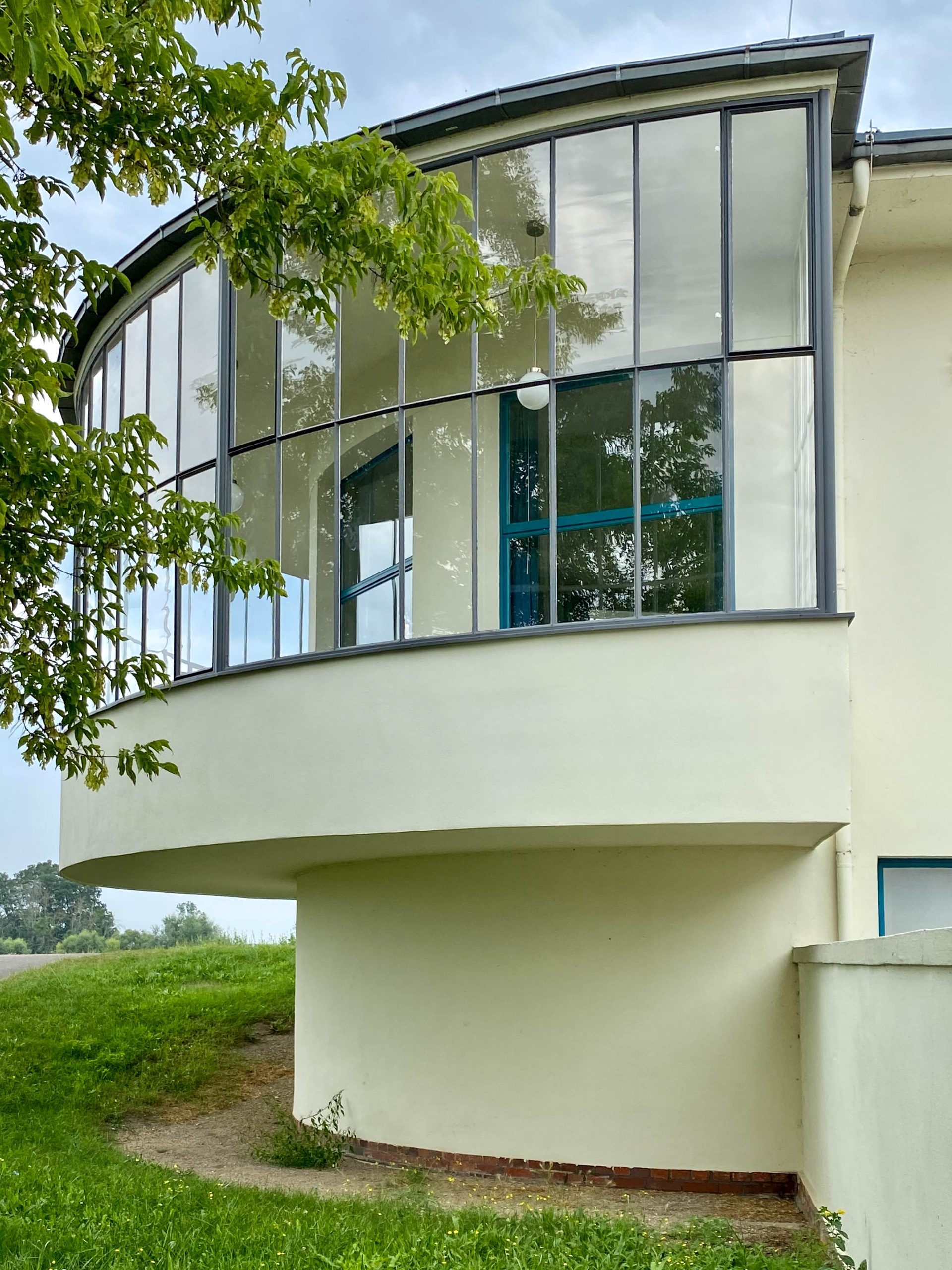
Kornhaus, 1929-1930. Architect: Carl Fieger. Photo: Daniela Christmann
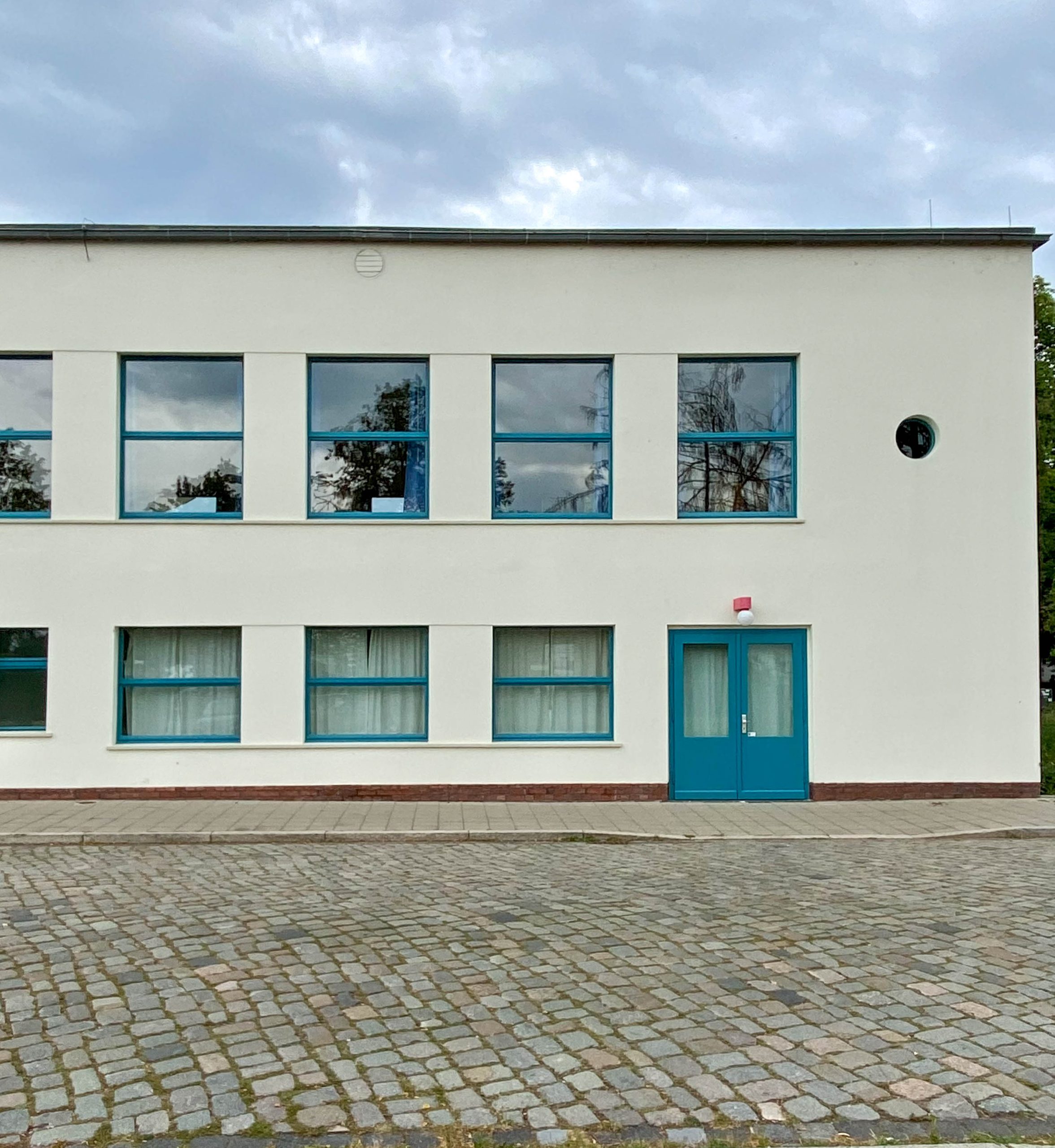
Kornhaus, 1929-1930. Architect: Carl Fieger. Photo: Daniela Christmann
1929 – 1930
Architect: Carl Fieger
Kornhausstraße 146, Dessau-Roßlau, Germany
The listed Kornhaus was built between 1929 and 1930 to plans by Carl Fieger in Dessau-Roßlau on the banks of the Elbe.
Carl Fieger
Fieger had graduated from the Mainz School of Applied Arts in 1911 and subsequently worked in Peter Behrens‘ studio in Neubabelsberg (Potsdam) until March 1913.
Between May 1913 and July 1914, Fieger was employed in the office of Walter Gropius, which he had founded together with Adolf Meyer in Berlin in the spring of 1910.
After participating as a soldier in World War I and working again from March to October 1919 in the Behrens office, Fieger was employed from May 1920 to 1933 as a design draftsman for the private construction office of Walter Gropius in Weimar, Dessau and Berlin.
In 1925 he had followed Gropius to the Bauhaus Dessau, where he taught courses in technical drawing and design for students.
As an architect, Fieger played a key role in many iconic modernist buildings: the extensions to the Fagus factory in Alfeld as well as the Bauhaus building and the Masters’ Houses in Dessau, the Dessau Labor Office and the Dessau-Törten housing estate.
Kornhaus Restaurant
In 1929, the city of Dessau, together with the Schultheiss-Patzenhofer brewery, commissioned the construction of the Kornhaus restauran. A competition was held among independent architects living in Dessau or born in Dessau.
The building was to be erected on the Elbe embankment, very close to the steamer landing stage.
The name Kornhaus recalls a historic granary that had stood here until the 1870s.
Although Carl Fieger did not win the competition, it was decided, probably for economic reasons, to accept and execute his design.
Construction
The building, designed for a total of 2000 guests including the outside area, has a flat roof and is built as a reinforced concrete skeleton with brick infill.
The white-plastered structure, located directly on the banks of the Elbe River, consists of a circular building with a glazed semi-cylindrical terrace and an elongated cube.
A clinker base and blue-painted window frames created color contrasts.
The round building appears to float through the glazed terrace cantilevered over a support.
The upper floor housed a dance hall and the restaurant area, which provided access to the Elbe terraces.
The semicircular porch to the west was originally planned as an open balcony, but was already glazed during construction.
In the basement there was a standing beer hall with a separate entrance.
Interior
The lamps in the Kornhaus are based on designs by Marianne Brandt.
Two lettered billboards, one vertically to the left of the entrance facing the street and one horizontally on the roof facing the river, drew attention to the excursion pub.
The interior was also designed by Carl Fieger.
Seating was provided by serially produced bentwood chairs by Thonet. The Bauhaus mural painting workshop was entrusted with the color design of the interior.
The opening of the Kornhaus took place on June 6, 1930. It quickly developed into a popular place for excursions.
Postwar and renovation
The building survived the heavy bombing raids on Dessau in World War II undamaged.
From 1940 to 1945, a war hospital was housed in the Kornhaus.
Since the beginning of the 1950s, the building was once again used as an excursion restaurant under the management of the HO (State Trade Organization of the GDR).
In 1959, the first renovation measures were carried out, and in 1976 the original color scheme was reconstructed.
From 1994 to 1996 the building was renovated in accordance with the preservation order.
After renewed renovation, the Kornhaus was reopened as an excursion restaurant in October 2012.
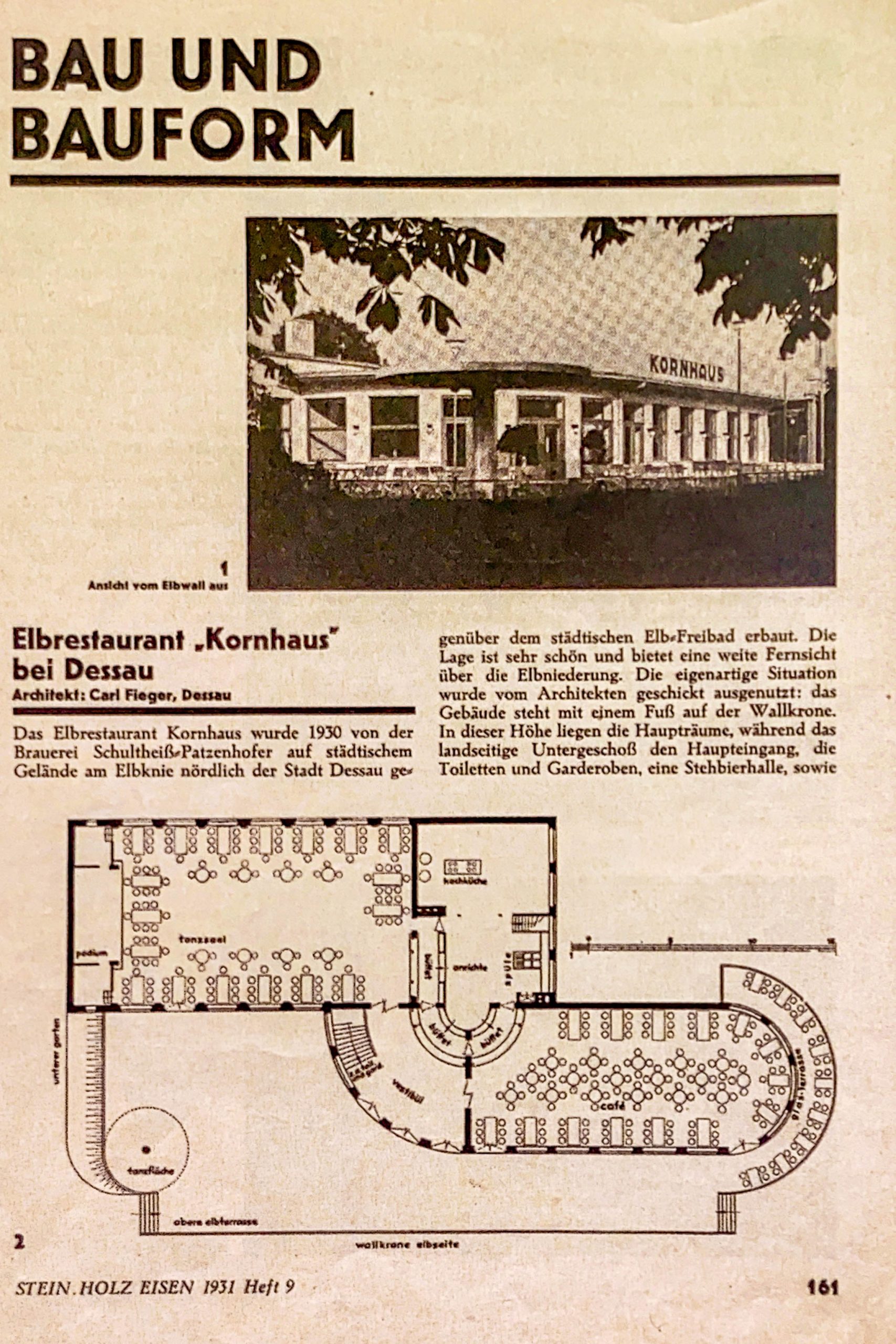
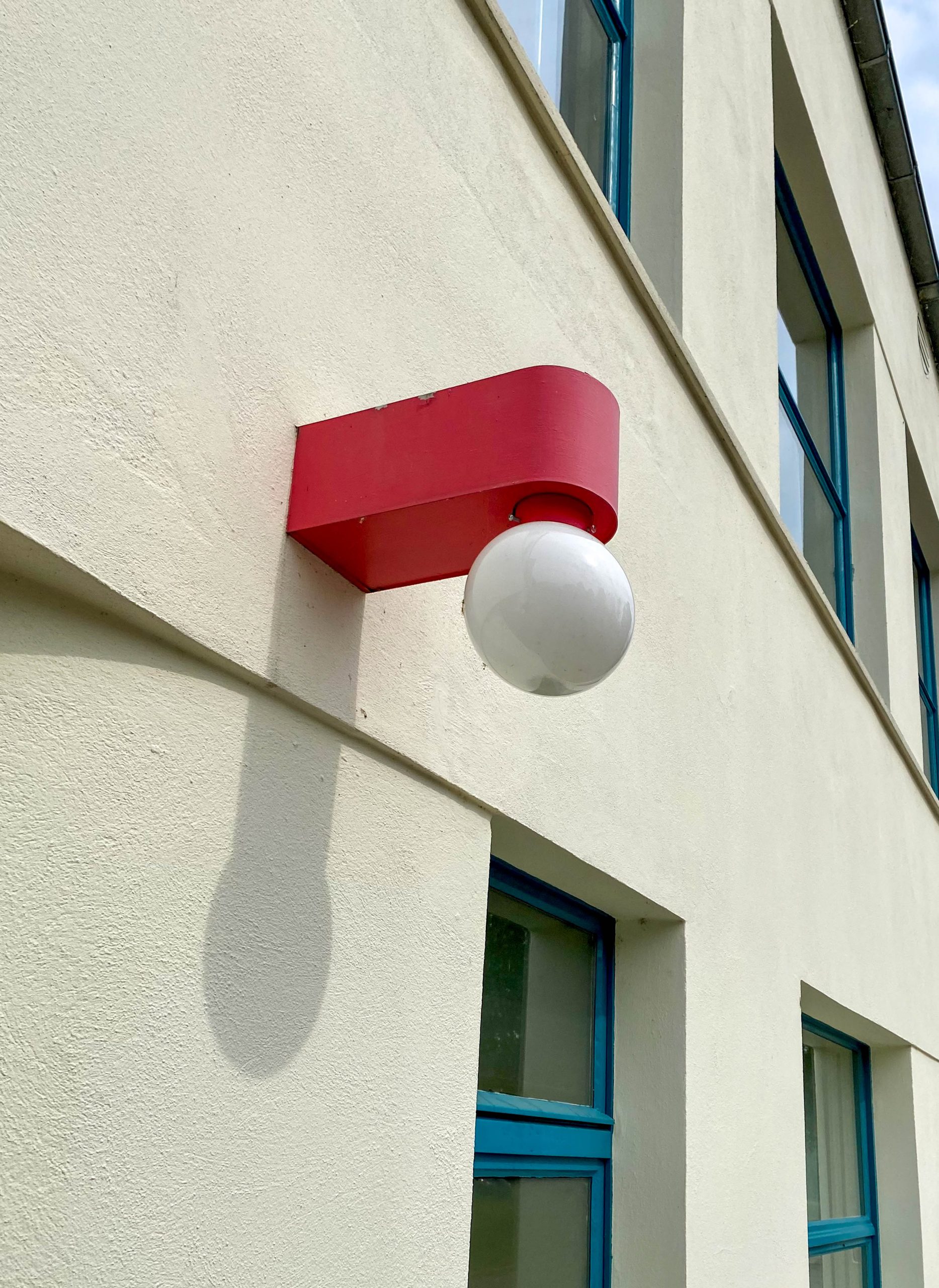
Kornhaus, 1929-1930. Architect: Carl Fieger. Photo: Daniela Christmann
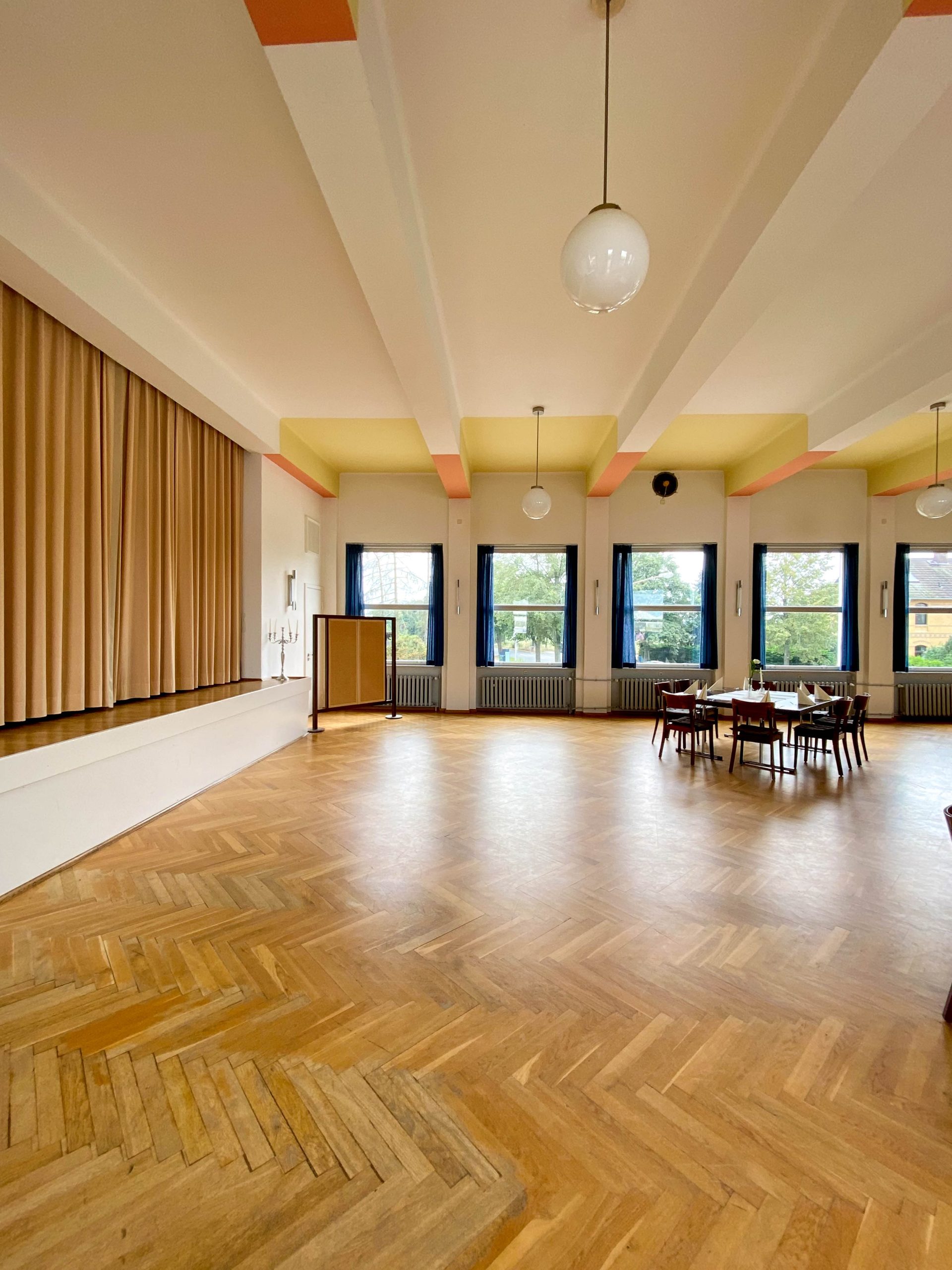
Kornhaus, 1929-1930. Architect: Carl Fieger. Photo: Daniela Christmann
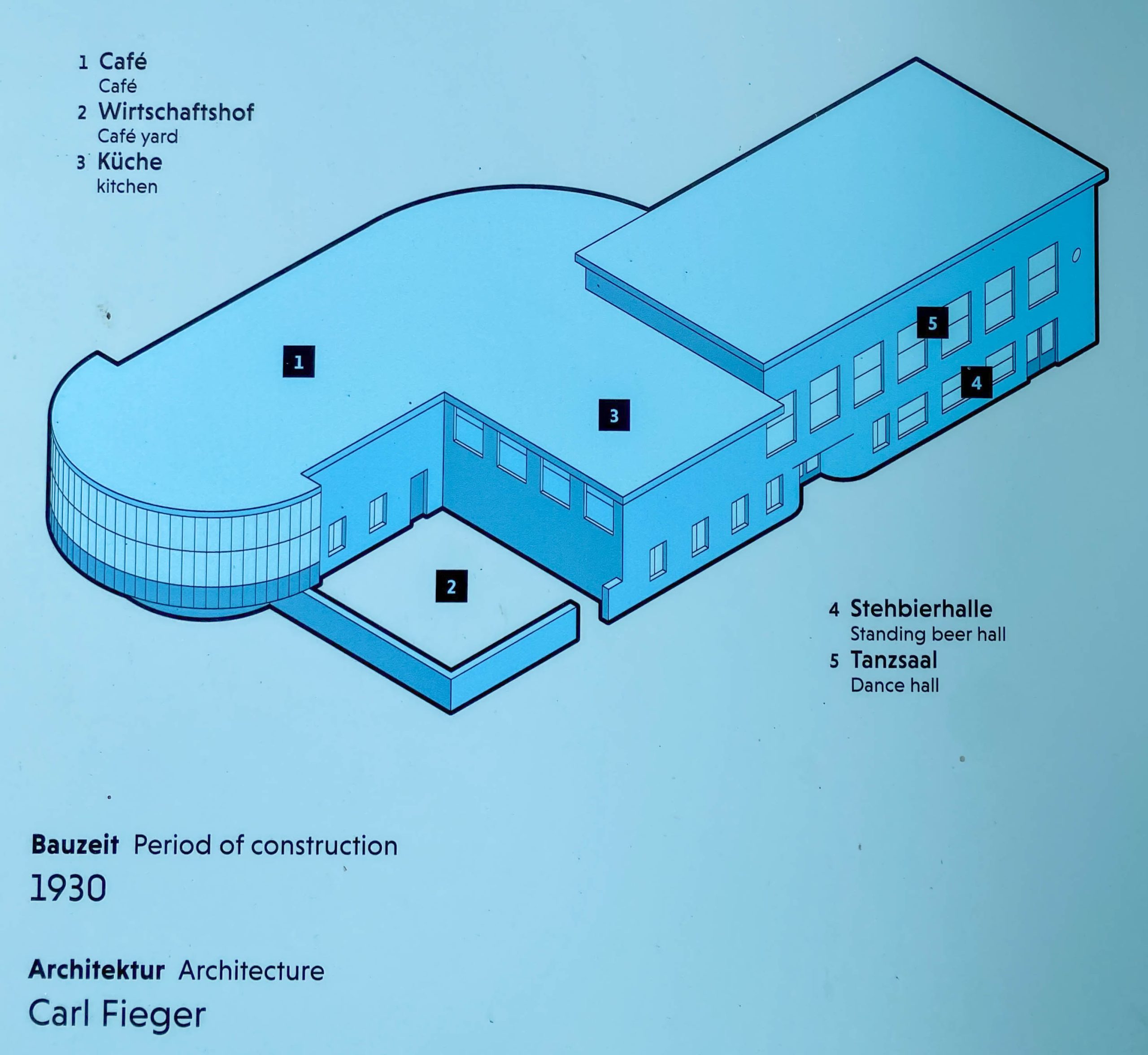
Information board at the Kornhaus, Dessau

